
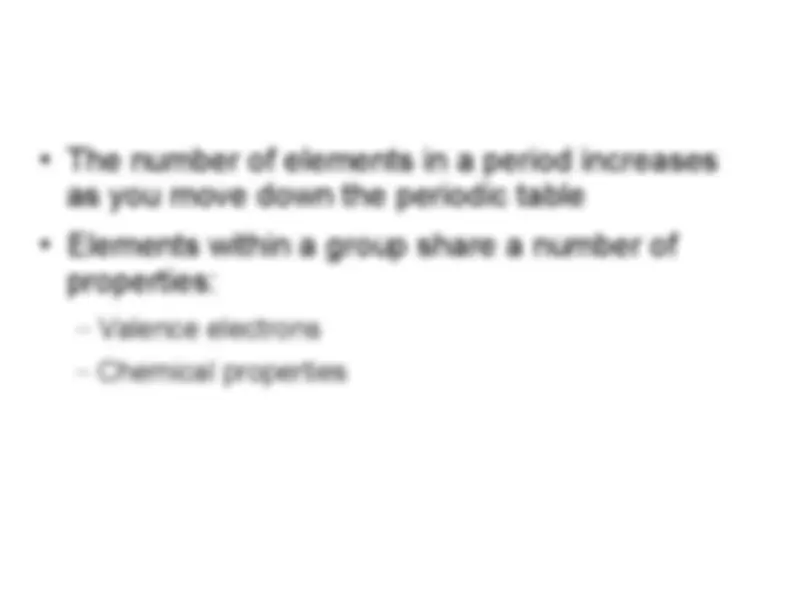
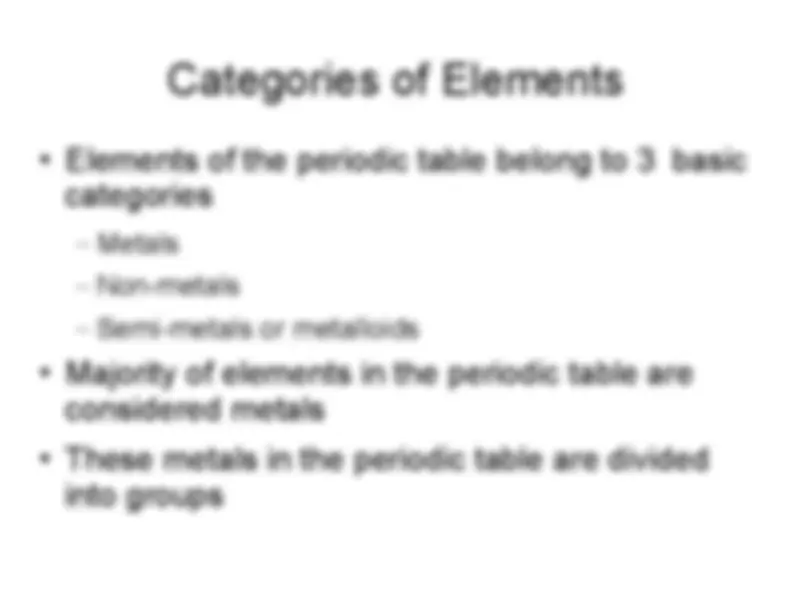
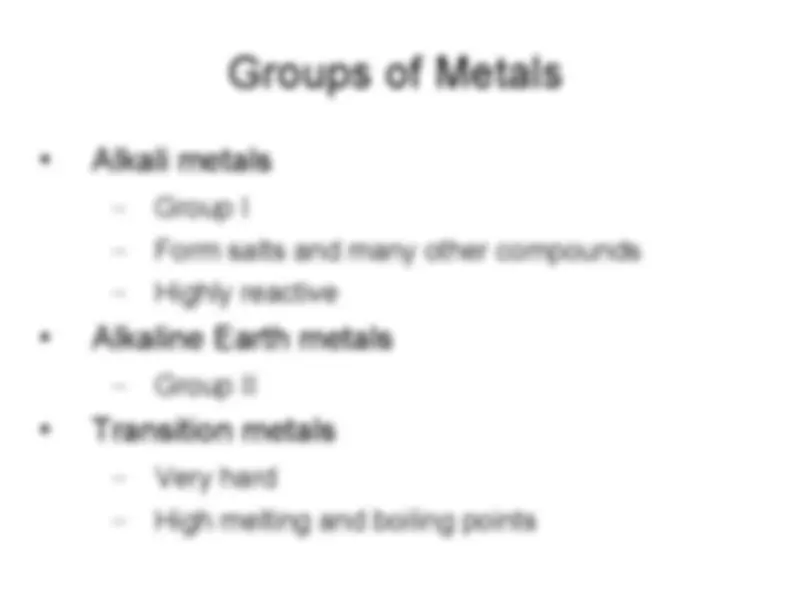
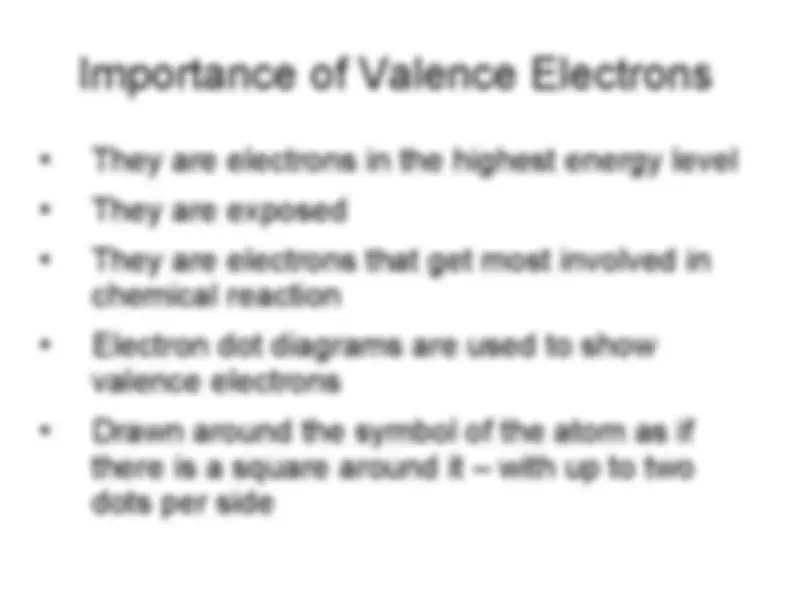
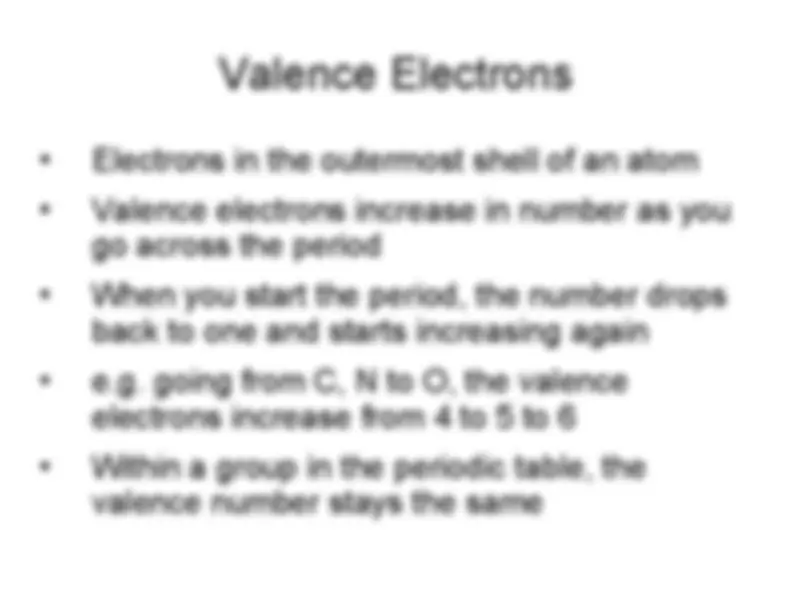
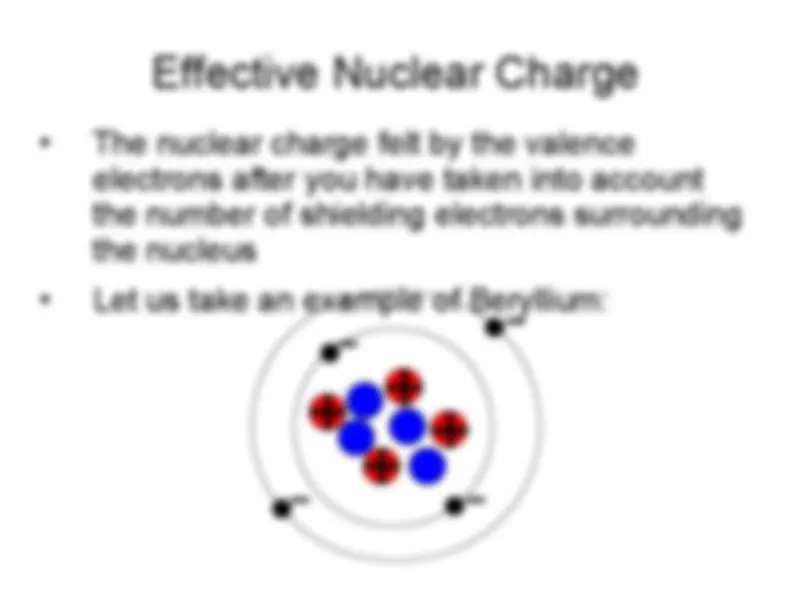


Study with the several resources on Docsity

Earn points by helping other students or get them with a premium plan


Prepare for your exams
Study with the several resources on Docsity

Earn points to download
Earn points by helping other students or get them with a premium plan
Community
Ask the community for help and clear up your study doubts
Discover the best universities in your country according to Docsity users
Free resources
Download our free guides on studying techniques, anxiety management strategies, and thesis advice from Docsity tutors
An overview of the periodic table, explaining how elements are arranged based on atomic number, the concept of periods and groups, and the significance of valence electrons in determining the properties of elements. It also introduces the three basic categories of elements: metals, non-metals, and semi-metals or metalloids.
Typology: Summaries
1 / 12

This page cannot be seen from the preview
Don't miss anything!






